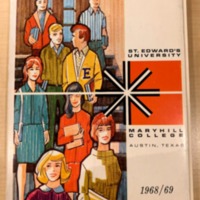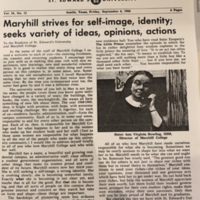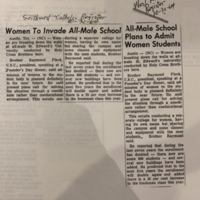Introduction
When imagining what college campuses looked like during the mid-twentieth century, most would picture anti-war protestors, rock-and-roll enthusiasts, and/or wannabe hippies - yet these images are more akin to college campuses in the Seventies. Instead, many American college campuses of the 1960s were tame places, concerned with how to change the structures of colleges to fit shifting student bodies. Some of the changes that colleges underwent dealt with matters concerning the framework of faculties and student bodies, the functions of the campus and administration, the curriculum, as well as coeducation. The latter presented itself as the most challenging for college administrations across the country because of societal expectations of gender - old-fashioned notions about women's education were dying out, but women's places on college campuses were still deeply rooted in ideas that women went to college and sought out “Mrs. Degrees.” Coeducation was the biggest potential challenge to sexual segregation, for it provided colleges with the opportunity to educate both men and women. [1]
Like many other Catholic universities in this era, St. Edward’s University sought a solution for a changing student body and society. St. Edward’s valued the differences between men and women, and appreciated the similarities in the values and interests of the students. To accommodate a system of coeducation, St. Edward’s University established Maryhill College as an all women’s college, which shared a campus with Holy Cross College, the all male college at St. Edward’s. In theory, this coeducational system should have worked - the administration raved about the potential successes of its newly diverse campus - but due to institutional conceptions of gender during the twentieth century, women did not receive an equal education compared to their male counterparts. This exhibit traces the challenges of coeducation women at Maryhill College experienced in terms of curriculum and social life, as well as examines the potential success Maryhill College had from the administrative view.
![[Maryhill/St. Edward's Brochure] [Maryhill/St. Edward's Brochure]](http://s3.amazonaws.com/archives-omeka-glen/square_thumbnails/8bb6dacfbb4b83995600b52e8fbef128.jpg)


